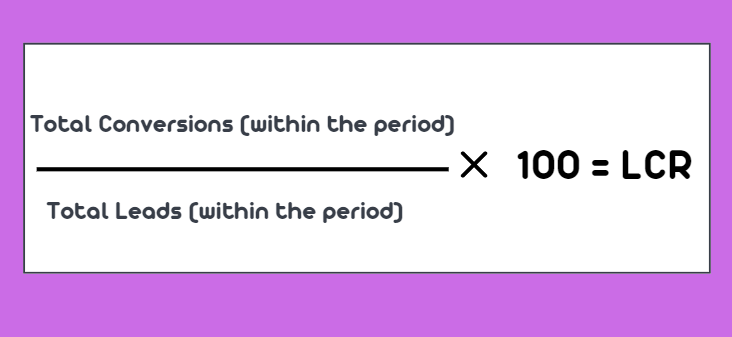Sales & Lead Conversion
17 Apr 2024 By: Mary Dellosa
Updated
In sales, converting leads into customers is key to success. Any business aiming to boost sales must know how to effectively turn leads into buyers. Here’s a simple breakdown of what lead conversion means.

Understanding the Basics of Lead Conversion
Defining Lead Conversion
Lead conversion is a process where an initial prospect turns into a paying customer. This is an important time when customers who are interested in a product or a service decide about buying it. This strategic period is important for the sales teams given the fact that it significantly affects the impact of the revenue target.
Effective lead conversion is truly all about building these authentic, heart felt connections with your target buyers. Through seeing the specific conditions and problems they encounter, giving each one of them corresponding solutions can form a bond which is personalized. This technique should contain individualized interactions, quick responses, and through and through understanding of customer journey. These connections are not only getting leads but also build lasting relationships.
The Importance of Lead Conversion in Sales
Lead conversion is one of the keys to business success. With weak conversion strategies in place, businesses may find it hard to move on and to achieve its financial goals. However, lead generation alone isn’t enough. The secret is to nurture those leads and turn them into real sales. This step is essential for a business to thrive and succeed.
Lead conversion is all about sustainability than just closing a deal; it’s about building relationships that will last, maintaining customer loyalty, and inspiring the customers to be advocates of your brand. Not only does a high conversion rate drive up the revenue; it also creates a stable base for your business and referrals, which in the long run, guarantees future growth for your company.
Strategies for Effective Lead Conversion
Identifying Potential Leads
First, it is important to know your potential customers well in order to achieve a successful lead conversion. By that, we mean collecting a detailed market research and setting up a focused lead generation approach. If you focus on finding out who your audience is and concentrate on the most promising prospects, your probability of turning those chances into happy customers significantly increases.
Market research will help identify possible leads. By diving into market trends, consumers’ behaviors research and close monitoring of your competitors you get valuable information on what your potential customers really want. Having these insights, you can then adapt your lead generation tactics to entice prospects who will be more likely to become long-term customers.
Engaging and Nurturing Leads
Identify your leads and work to connect with them in a mindful and persistent manner. Provide the exact content value that fits them individually, immediately solve their problems, and emphasize the foundation of trust. What you need to do is continuously delivering information and solutions that they can truly connect with them and do that you will be able to validate their interest in your brand.
“If you are not taking care of your customer, your competitor will”
Bob Hooey
Connecting with leads through email, social media, webinars, and personalized messages will help you to establish relationships as well as keep your brand within view. Nurturing the leads positions them to reach the bottom of the sales funnel where they make a purchase decision by offering precisely what they need. When you develop a strong rapport, you have a higher possibility of converting them into lifetime customers.
The Sales Process and Lead Conversion
The Role of Sales in Lead Conversion
Converting leads to customers is the main purpose of the sales team. They fill this void by interacting with customers, finding out their needs, and showing exactly how your product/service can be used to address those exact problems. However, by skillfully presenting your services and eliminating any doubts, they lead the way of potential buyers to a purchase.
The ability of sales team to network is a key component if a company desires to smoothly put leads through the sales funnel. Through building trust and fostering friendly interactions, the conversions will rise significantly. They show the true value of sales reps that are willing to spend the time to explain how they can improve the specific problems of their clients. Such one-on-one interaction during the sales process yields an impression of a more genuine approach that consequently increases the probability of making a sale.
Trending now
Figuring out a good sales conversion rate can be tricky because it depends on many factors, such as your sales process and who you’re selling to. Rates can vary widely, from 2% to 40%, depending on the industry and sales approach. For instance, an e-commerce sale might happen with a single click, while a B2B sale could require multiple stages, from initial contact to closing a deal. To find what works for your business, start by looking at your current numbers to set a baseline, then see how changes affect your rates.
In 2023, the typical sales conversion rate sits at about 2.35%, but what constitutes a good rate can vary greatly depending on your industry and the specifics of your sales process. For instance, e-commerce platforms often see different results compared to B2B companies. Methods like online advertising and email campaigns are particularly effective. To really drive improvements in conversion rates, businesses should concentrate on deeply understanding their target customers, delivering an exceptional customer experience, and adopting real-time communication tools like chatbots for better engagement.
Aligning Sales and Marketing for Better Conversion
Lead conversion depends on close collaboration of both sales and marketing teams. By working in tandem, they deliver a seamless customer experience with concise communication and a recognizable brand voice. This partnership is important for lead conversion, which includes each step of communication process.
Sales and marketing teams sometimes work together to identify strategies for improving the conversion of prospects. They share customer information with each other and it helps them to optimize their engagement strategies. This engagement helps in strengthening the lead nurturing efforts and also increases the conversion rates.
Measuring Lead Conversion Success
Key Metrics for Lead Conversion
Tracking lead conversion success is essential for refining your strategies. Key metrics like conversion rate and customer lifetime value help identify improvement areas and ensure your decisions are data-driven. This focus enhances your results.
Although it is necessary to observe the lead-to-opportunity conversion rate, focusing solely on it may not be the solution. Lead to close ratio implies the ratio of leads converted to opportunities, breaking down the quality of lead and the performance of lead nurturing techniques. Knowing this makes it easier to identify where your weak points are and figure out how to fix them in order to make your conversion processes more effective.
How to Calculate Lead Conversion Rate
To calculate your lead conversion rate (LCR), simply divide the number of converted leads by the total leads for the same period, then multiply by 100.

Interpreting Conversion Data
Analyzing data is the key for knowing the performance indicators. By learning the dynamics and patterns, you discover the consumers’ behaviors and desires. The information gives you enough ground to sharpen your conversion strategies as it enables you to adjust them to the demands of your target audience. This not only increases the conversion rate but also helps in the growth and retention of customers.
It is necessary to carry out conversion analysis for various channels like email, social media and paid ads. Through this, you are able to effectively allocate the advertising budget. This strategy, in turn, guarantees you attain the most ROI possible and that the effect of your marketing efforts is significantly optimized.
Improving Your Lead Conversion Rate
Boosting your lead conversion rate starts with a clear and appealing value proposition. Clearly outlining the benefits of your product or service and showing why it’s the top choice for potential customers makes a big difference. This clear communication helps potential buyers understand the unique benefits of choosing your product or service over the competition.
To really boost your lead conversion rate, besides having a compelling value proposition, you should simplify the conversion process. Make it easy for leads to take action, whether they’re buying something, signing up for a demo, or just seeking more information. Removing any hurdles in their path significantly raises the chances that they’ll complete the action and become customers.
Exceptional customer service is key to improving lead conversion. When you offer personalized support, quickly resolve concerns, and exceed expectations, you create a positive experience that encourages people to convert and builds lasting trust. This trust is crucial for developing long-term relationships with customers, fostering repeat business, and driving sustained growth.
Best Practices for Lead Conversion
Boosting your lead conversion rate involves a few key practices: a simple and effective solution is to convey clear and attractive value proposition, make purchasing easy, and ensure excellent customer service. what you can do to achieve that is to keep on delivering the customers a great and positive experience that will increase the likelihood of conversion.

Common Pitfalls and How to Avoid Them
The most important thing is how you will make the most of these opportunities and avoid common traps like late responses, getting complaints without resolving and failing to personalize the customer experience. Through this method, you increase your brand authority and, in turn, boost your chance of turning your leads into loyal customers.
Understanding the fundamentals of lead conversion, embracing useful methods, synchronizing your sales and marketing departments, and then consistently updating your efforts are the processes that increase conversion rates and businesses growth. This level of commitment contributes to the growth of your brand, consequently, its long term sustainability.
Are you ready to level-up your lead conversion process and elevate your customer experience? HelpSquad BPO provides dedicated virtual assistants and a 24/7 customer service team to help you succeed. With skilled, bilingual agents available from just $8.50 per hour, we ensure your leads receive top-notch care and help you meet your sales goals. Don’t let common challenges slow you down. Start a trial with HelpSquad BPO today and boost your efficiency with our professional outsourcing services.


